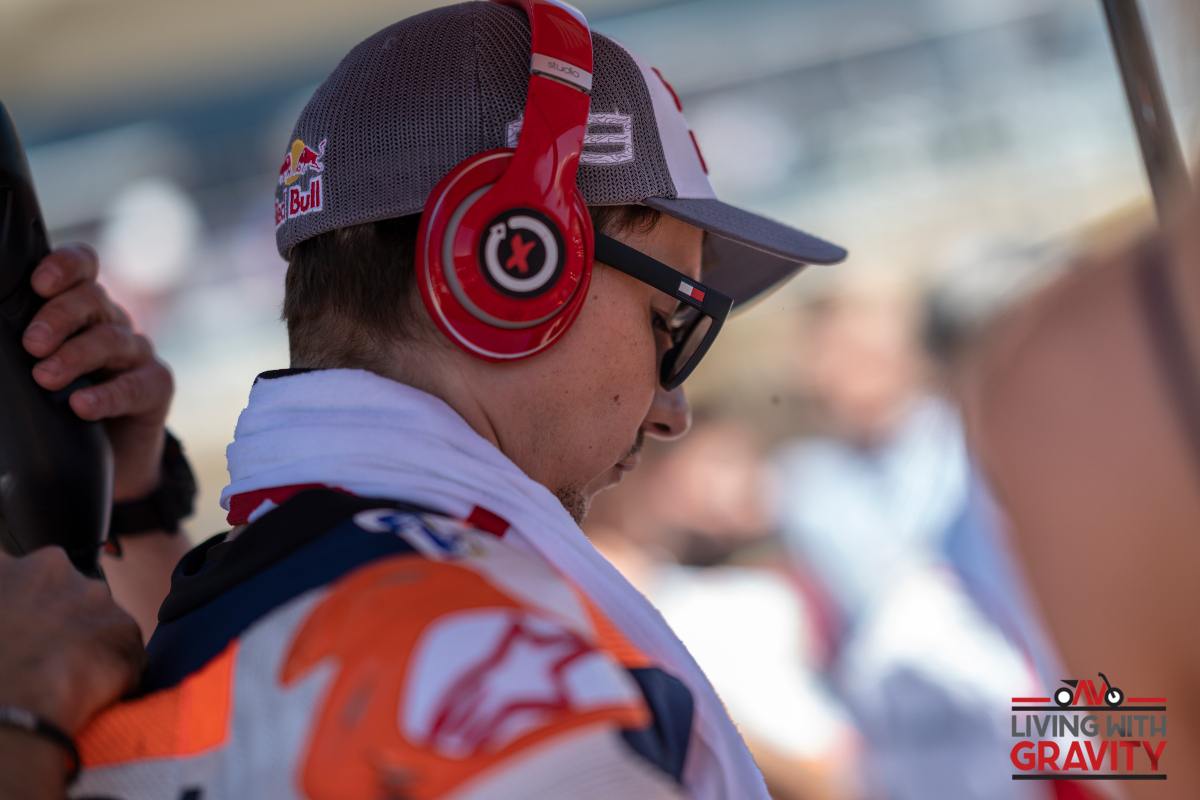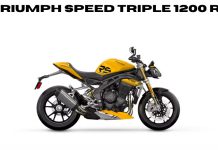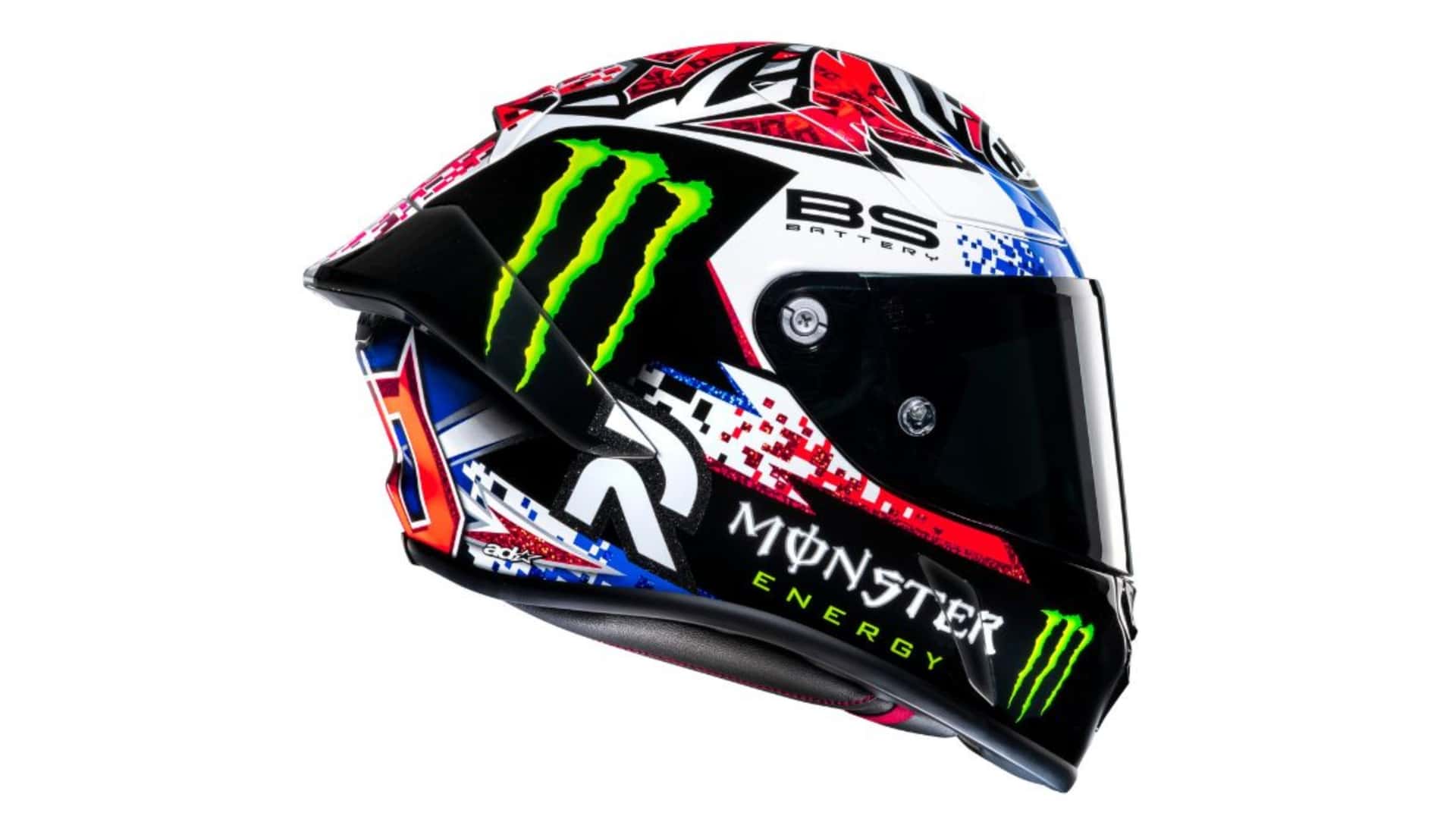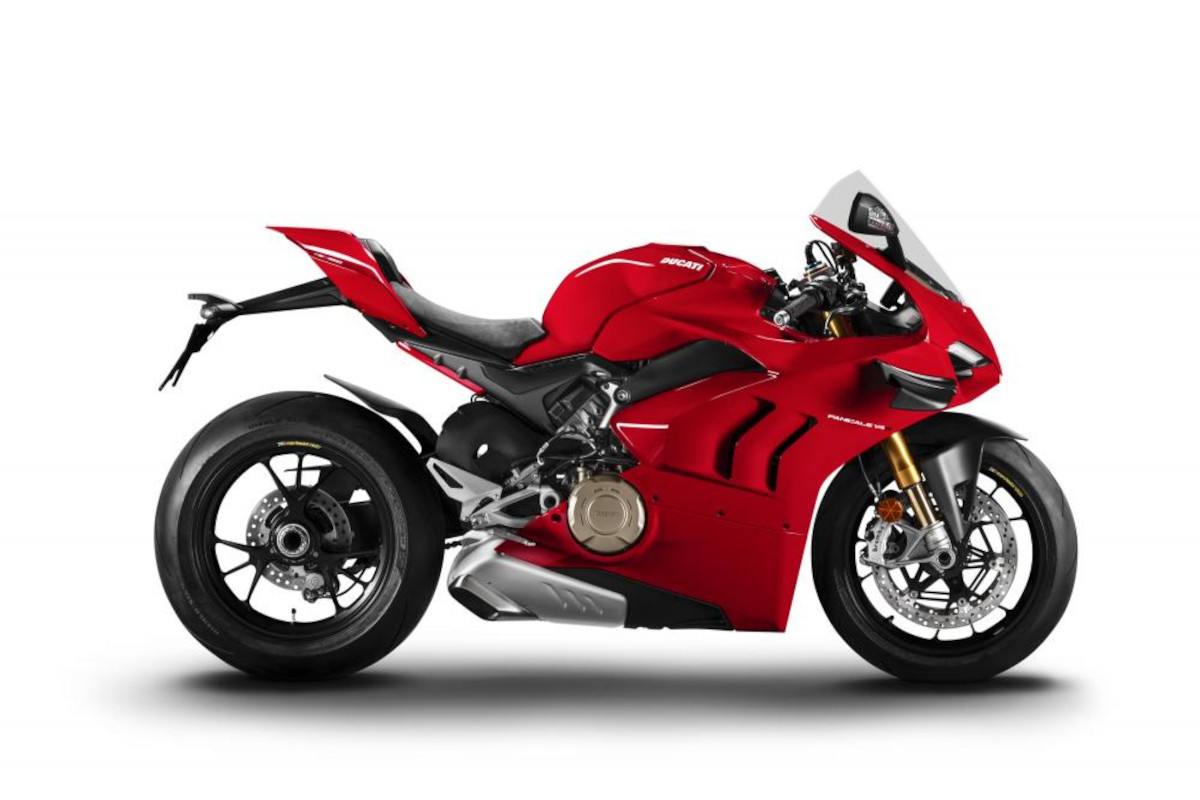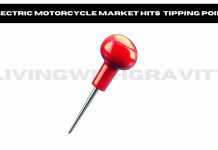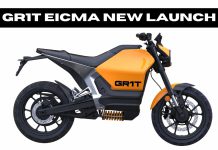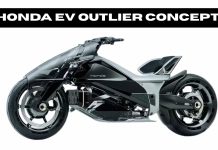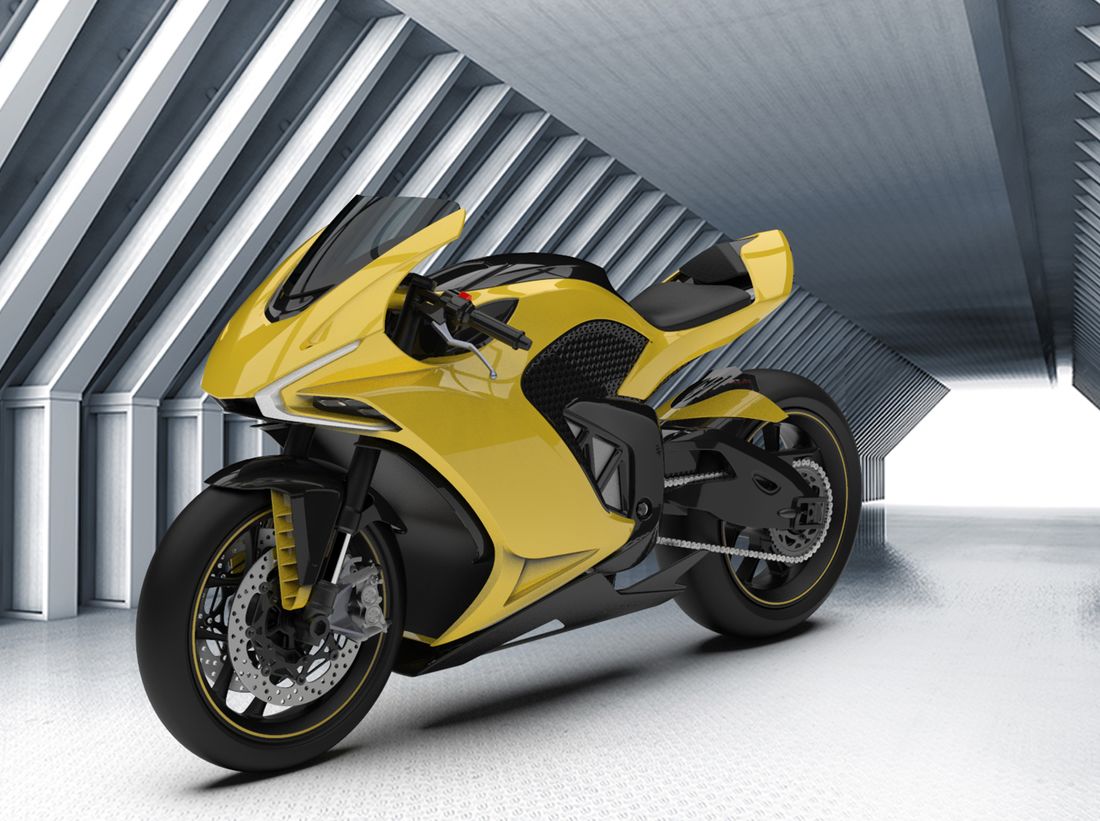1. Executive Summary
This report provides a comprehensive overview of significant motorcycle recalls, both globally and within India, with a focus on data current as of June 2025. The analysis highlights the scale, predominant types of issues, and the broader implications for manufacturers and consumer safety. Recent months, encompassing late 2024 through June 2025, have seen several large-scale recall campaigns initiated by prominent manufacturers such as Harley-Davidson, Kawasaki, and Honda in global markets, alongside Suzuki, Yamaha, and Royal Enfield in India.
A recurring pattern in these safety actions involves critical components like tires, braking systems, and electrical or ignition systems, indicating persistent challenges in these fundamental areas of vehicle design and manufacturing. The necessity for re-recalls, as observed with Harley-Davidson’s Softail models, underscores the inherent complexities involved in defect resolution and the imperative for robust quality control mechanisms. Given India’s immense two-wheeler market, the region frequently experiences recalls affecting hundreds of thousands of units, solidifying its position as a significant focal point for recall activity on a global scale.
2. Introduction
Vehicle recalls serve as a critical mechanism for upholding consumer safety and ensuring manufacturer accountability within the automotive industry. These actions, often mandated or voluntarily initiated, address defects that could pose risks to riders and other road users. Regulatory bodies, such as the National Highway Traffic Safety Administration (NHTSA) in the United States and the Society of Indian Automobile Manufacturers (SIAM) alongside the Ministry of Road Transport & Highways (MoRTH) in India, establish frameworks to govern these essential safety measures.
The objective of this report is to re-format and enhance a curated list of major motorcycle recalls from recent history, ensuring the information is current as of June 2025. The document delves into the specifics of each recall, analyzes underlying trends, and offers observations on their broader implications for the motorcycle industry. This information holds considerable importance for various stakeholders: for manufacturers, it is vital for maintaining stringent quality control, safeguarding brand reputation, and ensuring legal compliance; for consumers, it fosters awareness regarding potential safety issues with their vehicles; and for industry analysts, it provides valuable data for market trend assessment and risk evaluation.
3. Global Motorcycle Recalls (June 2025 Focus)
This section details the most significant global motorcycle recalls, with a particular emphasis on those announced or active in late 2024 and through June 2025. The focus centers on recalls impacting major Western markets, primarily drawing from data reported by the NHTSA and the Consumer Product Safety Commission (CPSC).
Harley-Davidson Softail Rear Tire Issue
Harley-Davidson initiated a significant recall on June 12, 2025, impacting approximately 82,117 Softail motorcycles from model years 2018-2024.1 The core concern involves a potential defect where the mounting tab on the rear shock pre-load adjuster can fracture, leading to the adjuster making contact with and damaging the rear tire, which can result in a sudden loss of tire pressure.2 This condition significantly increases the risk of a crash.2
Models specifically affected include the FLDE (2018-2019), FLHCS (2018-2024), FLHC (2018-2021), FXLRS (2020-2024), FXLRST (2022-2024), FLHCS ANV (2018, 2023), and FXRST (2022).2 To address this, dealers are instructed to install a new bracket free of charge, with owner notifications commencing by mid-June 2025.2 A notable aspect of this recall is that some vehicles involved had undergone repairs under a previous recall (23V591) for a similar issue.2
This recurrence suggests that the initial corrective action may not have fully resolved the underlying problem or that the defect’s complexity was underestimated. Such situations underscore the intricate nature of diagnosing and permanently rectifying certain mechanical and design flaws, highlighting the continuous need for thorough validation of repair strategies.

Kawasaki Motors USA 2025 KX Series
Kawasaki recalled approximately 3,400 model year 2025 KX450, KX450SR, and KX450X competition and cross-country motorcycles on April 24, 2025.6 The hazard identified is a potential failure of the primary gear for the crankshaft, which poses a substantial crash hazard.6 Consumers are strongly advised to immediately cease using these motorcycles and contact a Kawasaki dealer for a free repair, which involves replacing the primary gear.6
The fact that this recall specifically targets “competition and cross-country” models, which are typically subjected to extreme operational stresses, suggests that a failure in a fundamental engine component like the crankshaft primary gear could stem from a critical material or manufacturing defect. This type of defect, particularly in high-performance applications, could have severe consequences, emphasizing the importance of component integrity under demanding conditions. The immediate directive to stop using the motorcycles further highlights the severity of the potential safety risk.
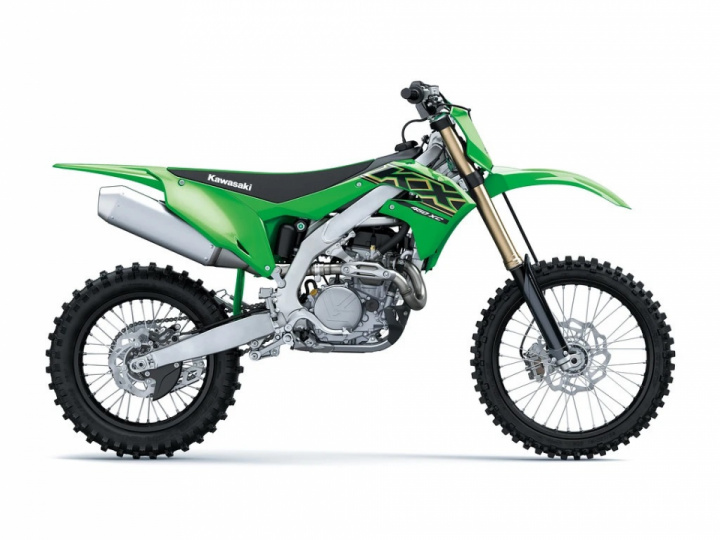
Kawasaki Motors 2024-2025 Ninja ZX-6R
Approximately 17,792 Ninja ZX-6R motorcycles from the 2024-2025 model years are subject to a recall due to the risk of losing engine power during operation.5 As of June 2025, the remedy for this issue remains under development, and a specific notification schedule for owners has not yet been provided.5
The ongoing development of a solution for a recall affecting nearly 18,000 units, coupled with the advisory for owners not to operate their motorcycles, indicates a complex underlying problem that is proving difficult to diagnose or rectify. This situation presents a considerable challenge for both the manufacturer and the affected consumers. It suggests that the root cause may not be easily identifiable, or the engineering solution required is intricate, necessitating significant research and development efforts. Such delays can significantly impact brand trust and customer loyalty, placing pressure on the manufacturer to expedite their diagnostic and remedial processes, especially for issues with high safety implications.

Honda 2024 XL750, 2025 CMX1100, CRF1100
Honda is recalling approximately 1,016 motorcycles, specifically the 2024 XL750, 2025 CMX1100, and CRF1100 models.5 The reason for this recall is an improperly manufactured part that could lead to engine oil leaking onto the rear tire.5 Notification letters to owners are anticipated to be mailed by July 25.5
An oil leak onto the rear tire represents a critical safety hazard, as it can directly compromise tire traction and significantly increase the risk of a crash. Although the number of affected units is relatively small, the nature of the defect points to a potential lapse in manufacturing quality control for a specific component.
This scenario suggests a localized quality control issue within a particular batch of parts or on a specific manufacturing line, rather than a widespread design flaw across a broad range of models. It underscores that even minor manufacturing deviations can lead to significant safety risks, emphasizing the necessity of rigorous inspection at every stage of the supply chain, particularly for critical components.

Indian Motorcycle 2025 Challenger, Pursuit, etc.
Indian Motorcycle has recalled certain 2025 Challenger, Pursuit, Chieftain PowerPlus, Roadmaster PowerPlus, Roadmaster Elite, and Springfield motorcycles.7 The recall addresses a defect in the fuel pump, specifically an incorrectly crimped wire by the supplier, which could result in fuel pump failure and subsequent engine stall during operation.7 This issue affects less than 50 motorcycles.7 Dealers are authorized to replace the fuel pump free of charge.7
The very small number of affected units suggests a highly isolated manufacturing or assembly error rather than a widespread design or supplier issue. Nevertheless, even a handful of units experiencing a critical failure like an engine stall poses a considerable safety risk. This situation demonstrates that manufacturers are increasingly identifying and acting on even very limited safety concerns, possibly due to enhanced internal testing protocols or stricter regulatory reporting requirements. This proactive approach to safety, where even minor deviations that could lead to severe consequences are addressed swiftly, helps prevent larger-scale problems from developing.

Table 1: Major Global Motorcycle Recalls (June 2025)
| Manufacturer | Affected Models | Model Years | Units Recalled | Primary Issue | Recall Date (or Latest Update) | Remedy | NHTSA/CPSC Recall Number |
| Harley-Davidson | Softail (FLDE, FLHCS, FLHC, FXLRS, FXLRST, FLHCS ANV, FXRST) | 2018-2024 | 82,117 | Rear shock pre-load adjuster damages tire, causing pressure loss | June 12, 2025 | Install new bracket free of charge | 0188 |
| Kawasaki Motors USA | KX450, KX450SR, KX450X | 2025 | 3,400 | Primary gear for crankshaft can fail, crash hazard | April 24, 2025 | Replace primary gear | 25-238 |
| Kawasaki Motors | Ninja ZX-6R | 2024-2025 | 17,792 | Risk of losing engine power while in use | June 17, 2025 | Remedy under development; owners advised not to drive | MC25-03 |
| Honda | XL750, CMX1100, CRF1100 | 2024, 2025 | 1,016 | Improperly manufactured part causes oil leak onto rear tire | June 17, 2025 | Replace faulty part free of charge | KS2 |
| Indian Motorcycle | Challenger, Pursuit, Chieftain PowerPlus, Roadmaster PowerPlus, Roadmaster Elite, Springfield | 2025 | < 50 | Fuel pump with incorrectly crimped wire, engine stall | March 4, 2025 | Replace fuel pump free of charge | 25V-108 |
4. Major Motorcycle Recalls in India (Recent History)
This section focuses on significant motorcycle and scooter recalls within the Indian market, which stands as one of the largest two-wheeler markets globally. It covers recalls from approximately 2021 onwards, highlighting the scale and types of issues prevalent in this region.
Honda Motorcycle & Scooter India (HMSI) Reflex Reflector Issue
In June 2021, Honda Motorcycle & Scooter India (HMSI) initiated a recall affecting a substantial 615,666 motorcycles and scooters due to a reflex reflector issue.9 The safety reflectors on the affected models exhibited slight variations from required photometric provisions, leading to insufficient light reflection and potentially reduced visibility, particularly in low-light conditions.9
The recall encompassed a wide range of models, including all variants of the Activa 5G/6G/125, CB Shine, Hornet 2.0, X-Blade, H’Ness CB 350, and CB 300R, all manufactured between November 2019 and January 2021.9 The corrective action involved the free replacement of the reflex reflector at authorized dealerships.9 This recall, involving over 600,000 units, was the largest initiated by any manufacturer in India since the Society of Indian Automobile Manufacturers (SIAM) Voluntary Code on Vehicle Recall came into effect in July 2012.10 This immense scale underscores the sheer volume of production and sales in the Indian two-wheeler market, illustrating how even a minor component defect, when multiplied across millions of units, can necessitate an enormous recall. It also highlights the increasing emphasis on seemingly minor safety features, like reflectors, under regulatory scrutiny in India, reflecting a maturation of safety standards within the market.
Honda CB300R Headlight Issue
Announced on April 11, 2025, Honda CB300R models manufactured between 2018 and 2020 were recalled due to a headlight issue.11 The problem originated from the internal Printed Circuit Board (PCB) structure housed behind the main LED headlight unit. Regular use and road vibrations over time could cause the wires connected to the headlight terminals to break or disconnect, potentially leading to flickering lights or, in some cases, a complete headlight failure.11 The remedy provided is a free replacement of the faulty part, irrespective of whether the vehicle is still under warranty.11
This recall, being active in April 2025 for models manufactured several years prior, suggests a delayed discovery or reporting of a latent defect. Headlight failure is a critical safety concern, especially for motorcycles, as it directly impacts rider visibility and safety during night-time operation. The identified cause, vibration-induced wire breakage, points to potential design vulnerabilities regarding long-term durability, particularly when considering the diverse and often challenging road conditions prevalent in India. This situation indicates that manufacturers need to enhance long-term durability testing, especially for components susceptible to vibration and environmental factors, to identify such latent defects earlier in the product lifecycle and prevent safety incidents years after sale.
Suzuki Motorcycle India High-Tension Cord & Rear Tire Issues
Suzuki initiated a recall affecting approximately 400,000 two-wheelers in India, addressing two distinct issues.12
For the high-tension cord issue, 388,411 scooters, including the Access 125 (263,788 units), Avenis 125 (52,578 units), and Burgman Street 125 (72,045 units), manufactured between April 30, 2022, and December 3, 2022, were recalled.12 The defect was identified as a faulty high-tension cord connected to the ignition coil, which did not meet drawing requirements.16 This could lead to cracks and breakage in the cord due to repeated bending from engine oscillation, potentially resulting in engine stall, starting failure, and even damage to vehicle speed and throttle position sensors if exposed to water.16
Separately, for the V-Strom 800 DE rear tire issue, 67 units of the V-Strom 800 DE, manufactured between May 5 and April 23, 2024, were recalled.12 This recall was due to a defect in the rear tire that could develop cracks from tread separation.12 All affected vehicles are eligible for free repairs at Suzuki service centers.12
Suzuki’s recall of nearly 400,000 scooters for a high-tension cord issue, alongside a separate recall for a premium bike’s tire, illustrates a dual challenge for manufacturers. It involves managing widespread component defects in high-volume, mass-market products while simultaneously addressing critical safety issues in lower-volume, higher-performance segments.
The specific cause for the scooter recall, related to the cord not meeting drawing requirements and cracking from engine oscillation, suggests a fundamental design or material specification flaw rather than a simple manufacturing error. This scenario indicates that quality control challenges can manifest differently across a manufacturer’s product portfolio, necessitating multi-faceted quality assurance programs tailored to the specific demands and volumes of various product lines.
India Yamaha Motor Brake Parts Issue
India Yamaha Motor recalled approximately 300,000 units of its 125cc scooter models, the Ray ZR 125 Fi Hybrid and Fascino 125 Fi Hybrid, due to faulty brake parts.10 This recall applies to scooters manufactured between January 1, 2022, and January 4, 2024.17 The issue specifically relates to the brake lever function.17 Yamaha is providing free replacement parts to affected customers.17
This recall represents the largest for Yamaha in India since SIAM’s Voluntary Code on Vehicle Recall was implemented and stands as the second largest recall by any manufacturer in India.10 A brake lever function issue, particularly affecting a hybrid scooter, points to potential complexities arising from the integration of new technologies, such as hybrid systems, with traditional mechanical components. It could also indicate a widespread supplier quality issue for a critical safety component.
The sheer volume of this recall again underscores the scale of the Indian market. The “brake lever function” issue in hybrid scooters could be indicative of a widespread manufacturing defect from a common supplier for a critical component, or potential design challenges in ensuring robust brake system functionality across different vehicle configurations, including those with hybrid powertrains that might introduce new stresses or operational nuances. This reinforces the absolute necessity of zero-defect tolerance for safety-critical systems like brakes and suggests that manufacturers must rigorously test component interactions, particularly as vehicle architectures evolve with new technologies.
Royal Enfield Ignition Coil Defect
Royal Enfield recalled 236,966 motorcycles, encompassing the Meteor 350, Classic 350, and Bullet 350 models, due to a defective ignition coil.19 This defect has the potential to cause misfiring, reduced vehicle performance, and in rare instances, an electric short circuit.19 The issue was traced to specific batches of material sourced from an external supplier between December 2020 and April 2021.19
Affected models include the Meteor (manufactured December 2020 to April 2021), Classic (January to April 2021), and Bullet (January to April 2021).19 The recall extended beyond India to include bikes sold in Thailand, Indonesia, Philippines, Australia & New Zealand, and Malaysia.19 The remedy involves inspection and replacement of the defective part, with Royal Enfield estimating that less than 10% of the recalled motorcycles would actually require replacement.19
This recall, while substantial in numbers, highlights the common challenge of managing supplier quality for critical components like ignition coils. The manufacturer’s estimate that only a small percentage would actually require replacement suggests a precautionary recall, where a broad range of vehicles were included to ensure safety, even if the confirmed defect rate was low. This reflects a proactive approach to compliance and consumer safety, potentially influenced by rising regulatory expectations. This trend indicates a maturing safety culture within the automotive industry, where the emphasis is on preventing harm rather than merely reacting to it, possibly driven by stricter penalties and reputational risks associated with delayed or insufficient recalls.
Table 2: Major Motorcycle Recalls in India (Recent History)
| Manufacturer | Affected Models | Manufacturing Period | Units Recalled | Primary Issue | Recall Date (or Latest Update) | Remedy |
| Honda Motorcycle & Scooter India (HMSI) | Activa 5G/6G/125, CB Shine, Hornet 2.0, X-Blade, H’Ness CB 350, CB 300R | Nov 2019 – Jan 2021 | 615,666 | Reflex reflector issue (insufficient light reflection) | June 16, 2021 | Free replacement of reflex reflector |
| Honda Motorcycle & Scooter India (HMSI) | CB300R | 2018-2020 | Not specified | Headlight PCB issue (flickering/failure due to vibrations) | April 11, 2025 | Free replacement of faulty headlight part |
| Suzuki Motorcycle India | Access 125, Avenis 125, Burgman Street 125 | Apr 30, 2022 – Dec 3, 2022 | 388,411 | Faulty high-tension cord (engine stall, starting failure) | March 3, 2025 (latest) | Free replacement of high-tension cord |
| Suzuki Motorcycle India | V-Strom 800 DE | May 5, 2024 – Apr 23, 2024 | 67 | Faulty rear tire (tread separation, cracks) | March 3, 2025 (latest) | Free replacement of rear tire |
| India Yamaha Motor | Ray ZR 125 Fi Hybrid, Fascino 125 Fi Hybrid | Jan 1, 2022 – Jan 4, 2024 | 300,000 | Faulty brake parts (brake lever function issue) | Feb 15, 2024 | Free replacement of brake parts |
| Royal Enfield | Meteor 350, Classic 350, Bullet 350 | Dec 2020 – Apr 2021 | 236,966 | Defective ignition coil (misfiring, short circuit) | May 19, 2021 | Inspection and replacement of defective part |
5. Analysis of Recall Trends and Common Issues
Synthesizing data from both global and Indian recalls reveals overarching trends, common types of defects, and their potential underlying causes. This analysis extends beyond individual recall descriptions to provide a thematic overview of safety challenges in the motorcycle industry.
Recurring Themes in Defects
Tire/Wheel Components
The Harley-Davidson Softail recall 1 and the Suzuki V-Strom 800 DE recall 12 underscore persistent challenges related to tire integrity and associated mounting hardware. Tire-related recalls are particularly concerning as they directly impact vehicle control and stability, posing immediate safety risks. The recurrence of such issues, especially the Harley-Davidson case where a previous remedy failed, suggests that diagnosing and permanently resolving complex interactions between components, such as a shock adjuster and a tire, can be exceptionally challenging. This complexity often necessitates iterative solutions and highlights the need for more rigorous dynamic testing and simulation during the research and development phase, especially for components that interact under load, to prevent critical safety failures that are difficult to remedy post-production.
Electrical/Ignition Systems
Multiple recalls, including Suzuki’s high-tension cord issue 12, Royal Enfield’s ignition coil defect 19, and Honda CB300R’s headlight PCB issue 11, demonstrate a pervasive vulnerability within electrical and ignition components. Failures in these systems, ranging from ignition problems to headlight malfunctions, can lead to sudden loss of power or visibility, significantly increasing crash risk. The common thread of “faulty parts” or “improperly manufactured” components points to potential weaknesses in the supply chain or quality control processes for these critical electrical assemblies.
The prevalence of such recalls suggests that while components are often sourced externally, their integration and resilience to environmental factors like vibration and water exposure are paramount. This indicates potential gaps in supplier quality assurance, component durability testing, or design specifications that do not adequately account for real-world operating conditions. As motorcycles become more electronically sophisticated, the reliability of electrical systems becomes paramount, necessitating increased investment in robust testing for environmental factors, thorough supplier audits, and potentially stricter control over critical electrical component manufacturing.
Braking System Issues
Yamaha’s recall concerning its scooter brake parts 10 emphasizes the continuous importance of flawless braking system performance. Braking system failures are among the most critical safety defects. The large scale of the Yamaha recall, specifically for a “brake lever function” issue in hybrid scooters, highlights that even seemingly simple mechanical components can be subject to widespread defects. This could be due to mass production variations or unforeseen interactions with new vehicle technologies, such as hybrid powertrains.
While the exact nature of the “brake lever function” issue is not fully detailed, its scale indicates a systemic problem, likely either a widespread manufacturing defect in the lever assembly itself or a design flaw that affects its operation over time. For hybrid scooters, it might also involve the interplay with regenerative braking systems or other electronic controls, adding complexity. This reinforces the absolute necessity of zero-defect tolerance for safety-critical systems like brakes and suggests that manufacturers must rigorously test component interactions, particularly as vehicle architectures evolve with new technologies.
Impact of Market Volume
The sheer volume of recalls observed in India (e.g., Honda’s over 600,000 units, Suzuki’s approximately 400,000 units, Yamaha’s 300,000 units) 9, when compared to global markets (e.g., Harley-Davidson’s 82,000 units, Kawasaki’s 17,000 units) 1, illustrates the disproportionate impact that even minor defects can have when multiplied across a massive user base. This high volume of recalls in India is not necessarily indicative of lower quality standards but is a direct consequence of the market’s immense size.
A recall affecting just 1% of units sold in India could easily surpass the total units sold in many Western markets. This places unique pressures on manufacturers operating in India to implement ultra-robust quality control systems and manage recall logistics on an unprecedented scale. For global manufacturers, operating in markets like India necessitates a distinct strategy for quality control and recall management, acknowledging that the scale of potential recalls is exponentially higher and emphasizing the importance of localized supply chain management and quality assurance.
Regulatory Environment and Proactive Recalls
The data suggests a discernible trend towards more proactive, company-initiated recalls, exemplified by Royal Enfield’s precautionary recall where only a small percentage (<10%) of the units were ultimately expected to require replacement.19 This trend is further supported by India’s Motor Vehicles Act, 1988, and its Rule 127C, which empower the central government to direct manufacturers to recall vehicles, along with the existence of SIAM’s Voluntary Recall Code.22
The increasing number of voluntary recalls, even for low-incidence defects, points to a maturing regulatory landscape and heightened corporate responsibility within the industry. Manufacturers are likely incentivized to act proactively to avoid government-mandated recalls, which can carry greater reputational and financial penalties.
This proactivity is driven by a combination of regulatory pressure, a desire to protect brand reputation in an increasingly connected world, and enhanced internal testing capabilities that allow for earlier detection of potential issues. This trend indicates a positive shift towards a more safety-conscious industry, where recalls are increasingly viewed as an essential component of product lifecycle management and brand stewardship, rather than solely a regulatory burden.
Table 3: Overview of Common Motorcycle Recall Issues by Category (Recent History)
| Issue Category | Specific Defect Description | Affected Manufacturers | Representative Recalls (Units) | Potential Impact |
| Tires/Wheels | Rear shock pre-load adjuster damaging tire, causing pressure loss; Rear tire tread separation/cracks | Harley-Davidson, Suzuki | Harley-Davidson Softail (82,117), Suzuki V-Strom 800 DE (67) | Loss of vehicle control, increased crash risk |
| Electrical/Ignition Systems | Faulty high-tension cord (ignition coil); Defective ignition coil; Headlight PCB issues (flickering/failure) | Suzuki, Royal Enfield, Honda | Suzuki Scooters (388,411), Royal Enfield (236,966), Honda CB300R (Not specified) | Engine stall, starting failure, reduced visibility, electric short circuit, increased crash risk |
| Braking Systems | Faulty brake parts / Brake lever function issue | India Yamaha Motor | Yamaha Ray ZR/Fascino (300,000) | Impaired braking performance, increased crash risk |
| Engine Components | Primary gear for crankshaft failure; Engine oil leak onto rear tire | Kawasaki Motors USA, Honda | Kawasaki KX Series (3,400), Honda XL750/CMX1100/CRF1100 (1,016) | Engine seizure, loss of power, loss of traction, crash hazard |
| Fuel Systems | Incorrectly crimped fuel pump wire leading to failure | Indian Motorcycle | Indian Challenger/Pursuit/etc. (< 50) | Engine stall during operation, increased crash risk |
6. Conclusion
The analysis of recent motorcycle recalls, current as of June 2025, reveals a dynamic landscape characterized by both significant volumes and a diversity of technical challenges. Key findings underscore the prevalence of issues related to tires, electrical and ignition systems, and braking components across various manufacturers and markets. The sheer scale of recalls in India, often involving hundreds of thousands of units, stands out as a direct consequence of the market’s immense size, highlighting the amplified impact of even minor defects in high-volume production environments.
These recall trends carry profound implications for the motorcycle industry. They emphasize the increasing importance of implementing robust, end-to-end quality control systems that extend from component design and supplier vetting to manufacturing and post-sales monitoring. The recurrence of certain issues, such as the Harley-Davidson Softail rear tire problem, demonstrates that defect resolution can be complex and may require iterative solutions and continuous validation of repair strategies. Furthermore, the observed shift towards more proactive, company-initiated recalls, even for low-incidence defects, reflects a maturing regulatory environment and a heightened sense of corporate responsibility. This proactivity is likely driven by both regulatory pressures and a strategic imperative to safeguard brand reputation in an increasingly transparent global market.
Looking forward, the motorcycle industry faces ongoing challenges and opportunities. The continuous integration of new technologies, such as electric powertrains and advanced electronic systems, will undoubtedly introduce new potential failure modes and necessitate adaptive supply chain management.
Ensuring product reliability and prioritizing consumer safety will remain paramount, requiring manufacturers to invest continuously in advanced testing methodologies, rigorous supplier audits, and a culture of continuous improvement. The evolving landscape of motorcycle safety demands an unwavering commitment from manufacturers to ensure product integrity and maintain public trust, ultimately contributing to the well-being of riders worldwide.
Sources
- www.ksat.com, accessed on June 24, 2025, https://www.ksat.com/news/local/2025/06/17/harley-davidson-kawasaki-and-chrysler-among-companies-recalling-vehicles-due-to-safety-issues/#:~:text=Harley%2DDavidson%20is%20recalling%20approximately,bracket%20at%20no%20additional%20cost.
- Harley-Davidson recalls more than 82,000 motorcycles due to crash …, accessed on June 24, 2025, https://m.economictimes.com/news/international/us/harley-davidson-recalls-more-than-82000-motorcycles-due-to-crash-risk-which-models-are-affected/articleshow/121840260.cms
- 82,000 Harley-Davidson Motorcycles Recalled Over Faulty Tires …, accessed on June 24, 2025, https://www.familyhandyman.com/article/harley-davidson-tire-pressure-recall/
- Watch Out, Harley-Davidson Has Recalled Over 50,000 Softail …, accessed on June 24, 2025, https://www.topspeed.com/why-over-50000-harley-davidson-softails-have-been-recalled/
- Harley-Davidson, Kawasaki and Chrysler among companies recalling vehicles due to safety issues – KSAT, accessed on June 24, 2025, https://www.ksat.com/news/local/2025/06/17/harley-davidson-kawasaki-and-chrysler-among-companies-recalling-vehicles-due-to-safety-issues/
- Kawasaki Motors USA Recalls Model Year 2025 Competition and Cross-Country Motorcycles Due to Crash Hazard | CPSC.gov, accessed on June 24, 2025, https://www.cpsc.gov/Recalls/2025/Kawasaki-Motors-USA-Recalls-Model-Year-2025-Competition-and-Cross-Country-Motorcycles-Due-to-Crash-Hazard
- Indian Motorcycle Recalls Some Model Year 2025 Challenger, Pursuit, Chieftain PowerPlus, Roadmaster PowerPlus, Roadmaster Elite, and Springfield Motorcycles | Polaris, accessed on June 24, 2025, https://www.polaris.com/en-us/recalls/on-road/indian-motorcycle-recalls-some-2025-challenger-pursuit-chieftain-powerplus-roadmaster-powerplus-roadmaster-elite-springfield-motorcycles/
- Recall roundup: 2024 Kawasaki Ninja, Z e1 and 2025 Indian Challenger Dark Horse, accessed on June 24, 2025, https://powersportsbusiness.com/news/dealers/2025/03/05/recall-roundup-2024-kawasaki-ninja-z-e1-and-2025-indian-challenger-dark-horse/
- Honda Motorcycle And Scooter India Recalls Multiple Models In India Over Reflector Issue, accessed on June 24, 2025, https://www.carandbike.com/news/honda-motorcycle-and-scooter-india-recall-multiple-models-in-india-over-reflector-issue-2464601
- Yamaha Recalls Over 3 Lakh Fascino 125 And RayZR 125 Scooters …, accessed on June 24, 2025, https://www.bikedekho.com/news/yamaha-recalls-over-3-lakh-fascino-125-and-rayzr-125-scooters-16502
- Honda CB300R Recalled In India, Here’s Why – BikeDekho, accessed on June 24, 2025, https://www.bikedekho.com/news/honda-cb300r-recalled-in-india-heres-why-17870
- Suzuki Recalls 4 Lakh Scooters & Bikes in India: Safety Alert! – YouTube, accessed on June 24, 2025, https://www.youtube.com/watch?v=dKh2jK0OJTM
- Suzuki recalls 4 lakh scooters and bikes in India – Team-BHP, accessed on June 24, 2025, https://www.team-bhp.com/news/suzuki-recalls-4-lakh-scooters-and-bikes-india
- Suzuki recalls 4 Lakh scooters and motorcycles in India – KalingaTV, accessed on June 24, 2025, https://kalingatv.com/business/suzuki-recalls-4-lakh-two-wheelers-including-access-125-in-india/
- Suzuki Access 125, Avenis 125, Burgman Street and V-Strom 800 …, accessed on June 24, 2025, https://www.bikedekho.com/news/suzuki-access-125-avenis-125-burgman-street-and-v-strom-800de-recalled-16945
- Suzuki Motorcycle India Recalls Over 3.8 Lakh 125 cc Scooters In …, accessed on June 24, 2025, https://www.ndtv.com/auto/suzuki-motorcycle-india-recalls-over-3-8-lakh-125-cc-scooters-in-india-6199325
- Yamaha Motor: India Yamaha Motor recalls 3 lakh scooter units to …, accessed on June 24, 2025, https://m.economictimes.com/industry/auto/two-wheelers-three-wheelers/india-yamaha-motor-recalls-3-lakh-scooter-units-to-rectify-brake-parts/articleshow/107731039.cms
- Yamaha recalls over 3 lakh Fascino 125 & Ray ZR 125 in India – Overdrive, accessed on June 24, 2025, https://www.overdrive.in/news-cars-auto/yamaha-recalls-over-3-lakh-fascino-125-ray-zr-125-in-india/
- 2,36,966 Units Of Royal Enfield Motorcycles Recalled Over Faulty Ignition Coil | Motoroids, accessed on June 24, 2025, https://www.motoroids.com/news/236966-units-of-royal-enfield-motorcycles-recalled-over-faulty-ignition-coil/
- India’s Royal Enfield recalls about 237000 motorcycles on ignition coil defect, accessed on June 24, 2025, https://www.tbsnews.net/world/global-economy/indias-royal-enfield-recalls-about-237000-motorcycles-ignition-coil-defect
- India’s biggest vehicle recall! Royal Enfield calls back nearly 2.37 …, accessed on June 24, 2025, https://www.businesstoday.in/auto/story/india-biggest-vehicle-recall-royal-enfield-calls-back-nearly-237-lakh-bikes-here-why-296483-2021-05-19
- vehicle recall policy – PIB, accessed on June 24, 2025, https://www.pib.gov.in/PressReleasePage.aspx?PRID=2039503
Our Social Media Handles
- Instagram : LivingWithGravity
- Medium : Akash Dolas
- YouTube Channel : Gear and Shutter





